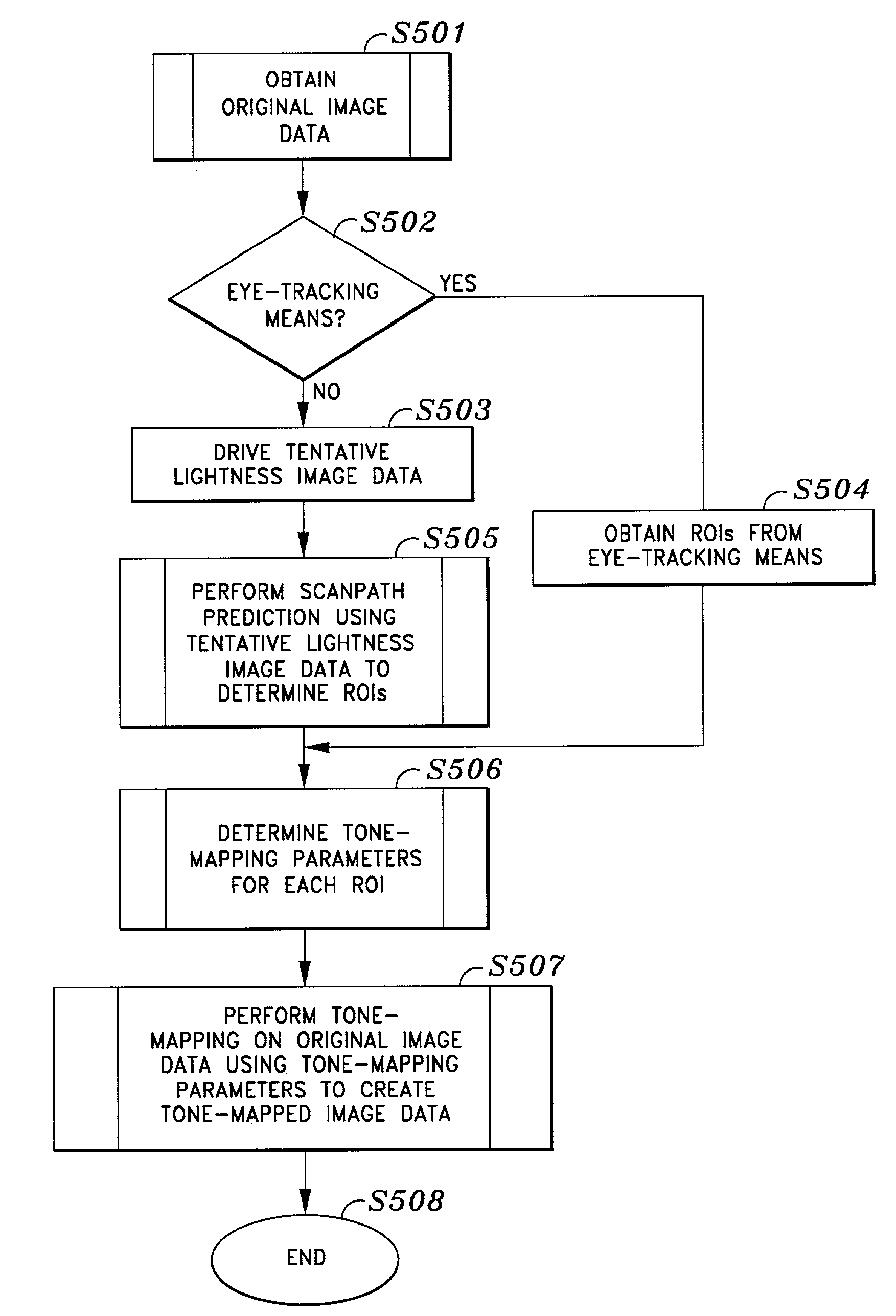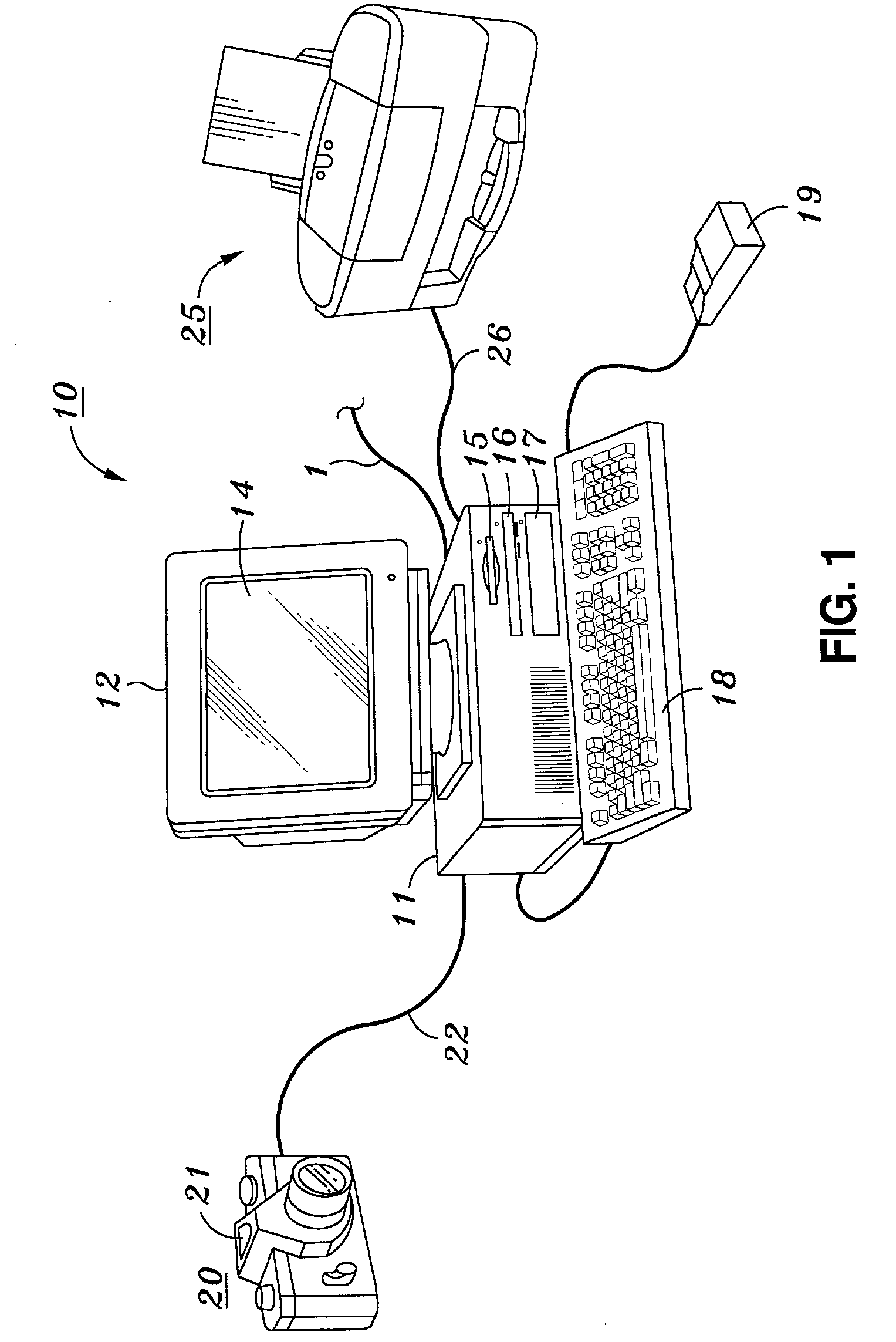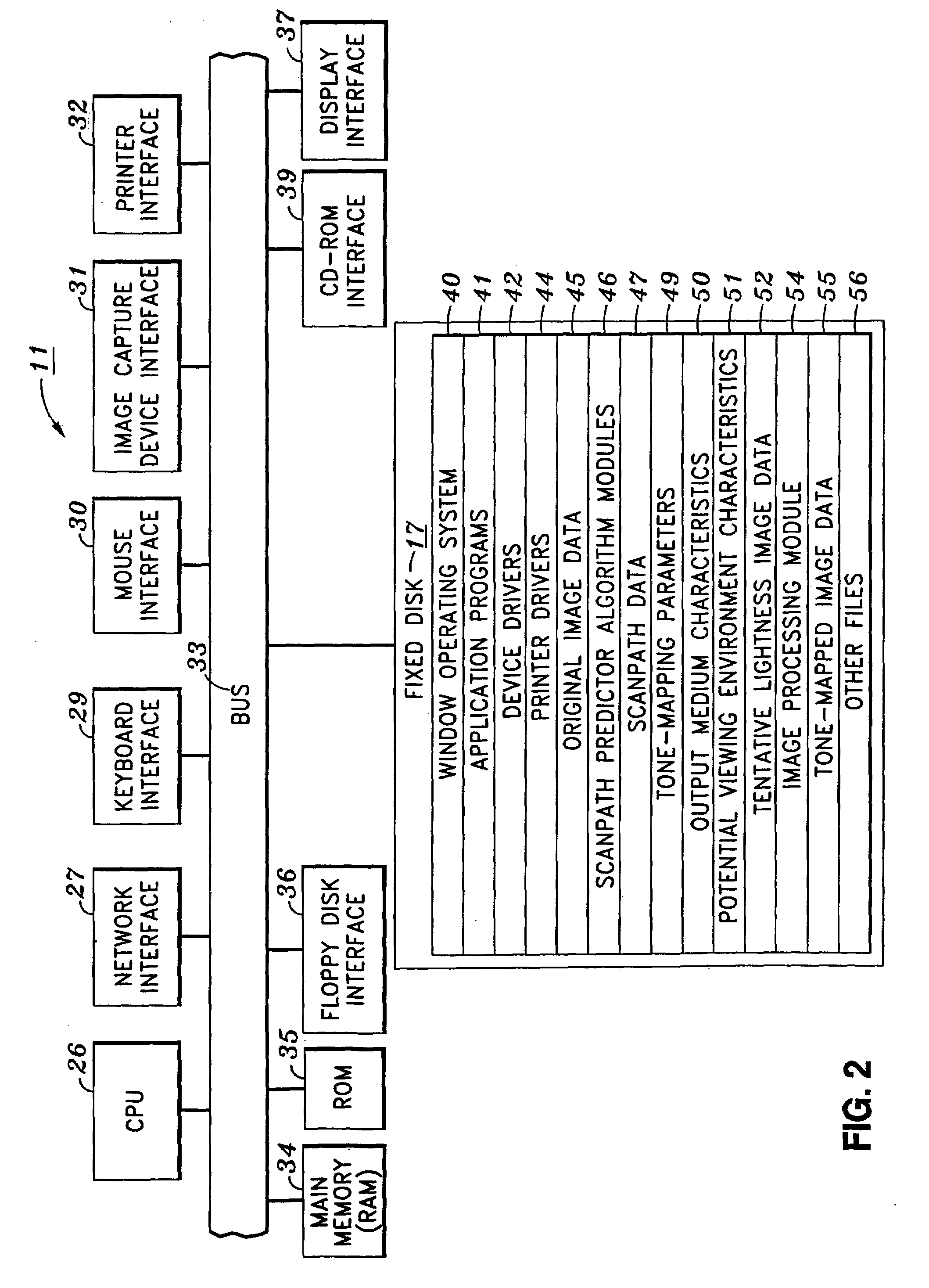Automatic tone mapping for images
a tone mapping and image technology, applied in the field of image processing, can solve the problems of complex above-the-scene technique, inability to accurately match the original scene luminance level, and inability to accurately match the luminance level of the original scene, etc., to achieve automatic mapping of tone levels, improve the appearance, and be pleasing to the eye.
- Summary
- Abstract
- Description
- Claims
- Application Information
AI Technical Summary
Benefits of technology
Problems solved by technology
Method used
Image
Examples
Embodiment Construction
[0029]FIG. 1 is a view showing the outward appearance of a representative embodiment of the invention. As seen in FIG. 1, a computing environment is shown which includes computing equipment 10, image capture device 20 and printer 25. Computing equipment 10 includes host processor 11, color monitor 12, display screen 14, keyboard 18, pointing device 19, fixed disk 17, floppy disk drive 15, CD-ROM drive 16. Each of these elements will now be described in more detail.
[0030]Host processor 11 comprises a typical computer workstation that is capable of displaying images. Host processor 11 preferably executes a windowing operating system such as Microsoft Windows, Linux with the X window system or MacIntosh operating systems. Provided with computing equipment 10 are color monitor 12 including display screen 14, keyboard 18 for entering text data and user commands, and pointing device 19. Pointing device 19 preferably comprises a mouse, for pointing, selecting and manipulating objects displ...
PUM
 Login to View More
Login to View More Abstract
Description
Claims
Application Information
 Login to View More
Login to View More - R&D
- Intellectual Property
- Life Sciences
- Materials
- Tech Scout
- Unparalleled Data Quality
- Higher Quality Content
- 60% Fewer Hallucinations
Browse by: Latest US Patents, China's latest patents, Technical Efficacy Thesaurus, Application Domain, Technology Topic, Popular Technical Reports.
© 2025 PatSnap. All rights reserved.Legal|Privacy policy|Modern Slavery Act Transparency Statement|Sitemap|About US| Contact US: help@patsnap.com



